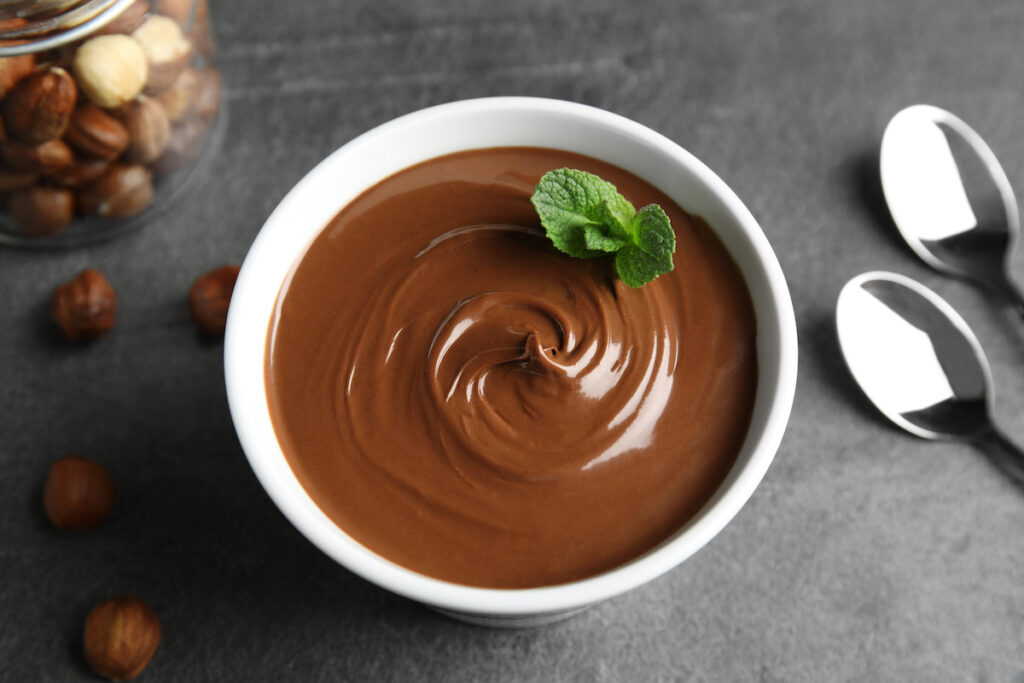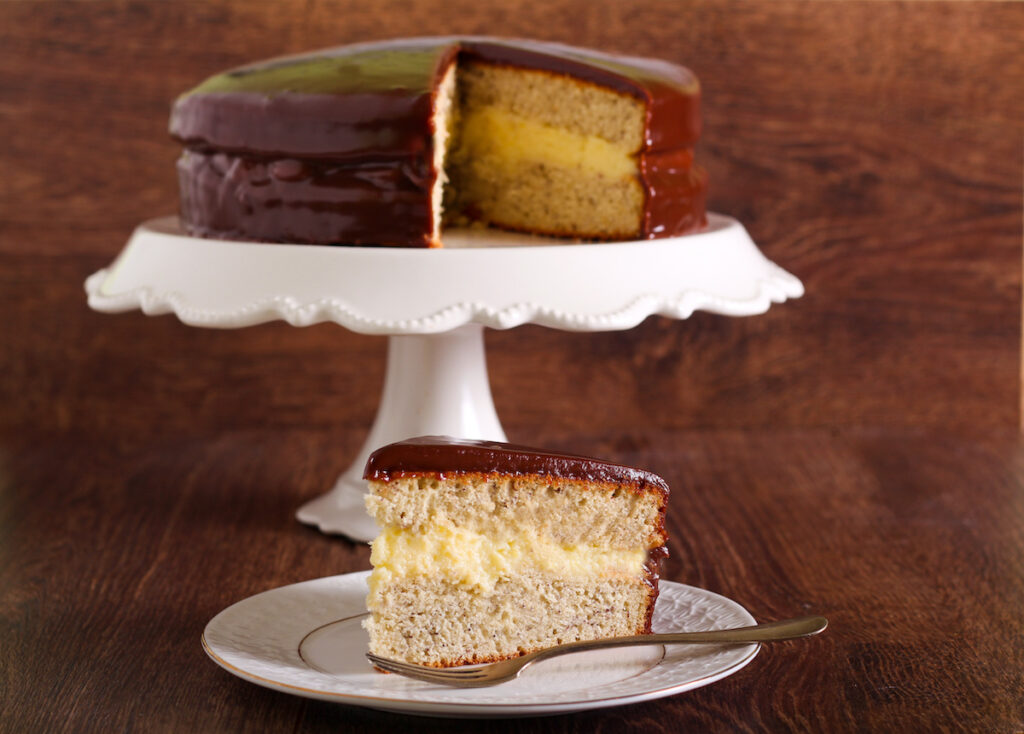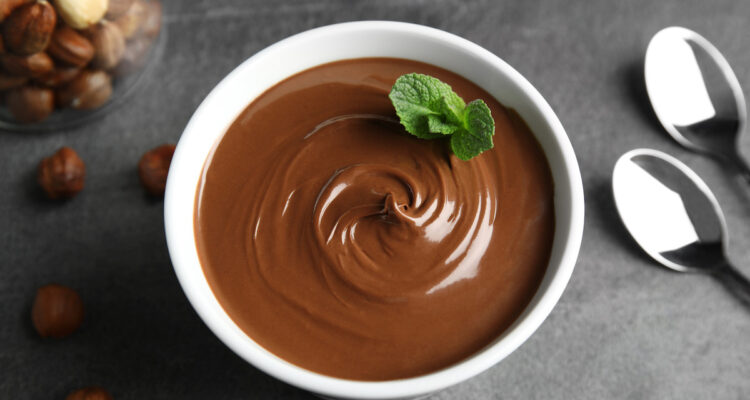
When it comes to making cake filling, pudding is a popular choice due to its creamy texture and versatility. However, sometimes the pudding may turn out too thin, making it difficult to use as a filling. Luckily, there are several ways to thicken pudding for cake filling, and I’m here to share some of my favorite methods.
One of the easiest ways to thicken pudding for cake filling is to simply add more pudding mix to the recipe. This will increase the amount of thickening agents in the pudding, resulting in a thicker consistency. Another option is to add a thickener such as cornstarch or flour. These ingredients work by absorbing the excess liquid in the pudding, creating a thicker consistency. However, it’s important to note that adding too much thickener can result in a gummy or starchy texture, so it’s best to use these ingredients in moderation.
If you’re looking for a quick and easy way to thicken pudding for cake filling, consider adding whipped cream or whipped topping. This will not only thicken the pudding, but it will also add a light and airy texture to the filling. Additionally, you can add more eggs to the recipe to create a thicker and richer pudding. Whatever method you choose, it’s important to remember that the consistency of the pudding will continue to thicken as it cools, so be sure to keep this in mind when adjusting the recipe.
Understanding Pudding
As someone who loves to bake, I know that pudding is a useful ingredient when it comes to making cakes and other desserts. Pudding is a sweet and creamy dessert that can be served on its own or used as a filling for cakes, pies, and other desserts. In this section, I will explain the different types of pudding and the ingredients used to make pudding.
Types of Pudding
There are two main types of pudding: cooked and instant. Cooked pudding is made by cooking milk, sugar, and other ingredients on the stove until it thickens. Instant pudding, on the other hand, is a type of pudding that thickens when mixed with milk. Instant pudding is much easier to make than cooked pudding and is often used as a filling for cakes and other desserts.
Ingredients for Making Pudding
The ingredients used to make pudding can vary depending on the recipe. However, the basic ingredients for making pudding are milk, sugar, and a thickening agent. Some common thickening agents used in pudding include cornstarch, flour, and gelatin. Pudding can also be flavored with vanilla, chocolate, or other flavors.
When making pudding, it’s important to whisk the ingredients together thoroughly to prevent lumps from forming. It’s also important to cook the pudding over low heat and to stir it constantly to prevent it from burning.
Tips for Thickening Pudding
If you’re making pudding as a filling for cakes or other desserts, you may need to thicken it to achieve the desired consistency. There are several ways to thicken pudding, including adding more pudding mix, adding a thickener such as cornstarch or flour, or adding more eggs to the recipe.
Another way to thicken pudding is to add whipped topping, buttercream frosting, or powdered sugar. These ingredients can help to thicken the pudding and give it a richer flavor.
When using a thickening agent, it’s important to use the right amount. Too much thickener can make the pudding too thick, while too little can make it too thin. It may take some trial and error to get the right consistency, but with practice, you’ll be able to thicken pudding like a pro.
Thickening Pudding
Pudding is a wonderfully versatile ingredient that can be used also as a cake filling. However, sometimes pudding can be too runny, which makes it difficult to work with. In this section, I will share some more practical tips and tricks on how to thicken pudding for cake filling.
Common Thickening Agents
There are several common thickening agents that you can use to thicken pudding. Here are some of the most popular ones:
- Arrowroot powder: Arrowroot powder is a starch-based thickening agent that is similar to cornstarch. It is gluten-free and can be used as a substitute for cornstarch in most recipes.
- Tapioca starch: Tapioca starch is another starch-based thickening agent that is commonly used in pudding recipes. It is gluten-free and can be used as a substitute for cornstarch.
- Wheat flour: Wheat flour is a common thickening agent that is used in many recipes, including pudding. However, it is important to note that flour can change the texture and flavor of the pudding.
- Cornstarch: Cornstarch is the most common thickening agent used in pudding recipes. It is gluten-free and can be used in most recipes.
Tips for Thickening Pudding
Here are some tips that can help you thicken pudding:
- Use less liquid: If your pudding is too runny, try using less liquid in the recipe.
- Overcook the pudding: Overcooking the pudding can help thicken it. However, be careful not to burn the pudding.
- Trial and error: If your pudding is too runny, try adding a small amount of thickening agent at a time until you reach the desired consistency. Notice that some thickening agents need cooking to work properly.
Troubleshooting Pudding Not Thickening
If your pudding is not thickening, here are some things you can do:
- Use a starch-based thickening agent: If your pudding is not thickening, try using a starch-based thickening agent like cornstarch or arrowroot powder.
- Use instant vanilla pudding mix: If you are short on time, you can use instant vanilla pudding mix to thicken your pudding.
- Use less milk: If your pudding is too runny, try using less milk in the recipe.
In conclusion, there are several ways to thicken pudding for cake filling. By using common thickening agents, following tips for thickening pudding, and troubleshooting pudding not thickening, you can create a delicious and thick pudding that is perfect for cake filling.
Pudding for Cake Filling
When it comes to cake filling, pudding is a popular choice for its creamy texture and versatility. In this section, I will guide you through choosing the right pudding, making pudding for cake filling, and alternatives to pudding for cake filling.
Choosing the Right Pudding
When choosing a pudding for cake filling, consider the flavor and consistency. Chocolate, vanilla, and butterscotch are popular choices, but you can also experiment with other flavors. The consistency of the pudding should be thick enough to hold its shape between cake layers. Instant pudding mixes are a convenient option, but you can also make pudding from scratch using egg yolks, heavy cream, and sugar.
Pudding Recipe for Cake Filling
Ingredients
2 1/4 cups whole milk, divided
1/4 cup granulated sugar
1/4 cup cornstarch
1 teaspoon vanilla extract
Instructions
- In a medium saucepan, whisk together 2 cups of milk and sugar.
- Heat the mixture over medium heat until it comes to a simmer.
- In a small bowl, whisk together cornstarch and 1/4 cup of cold milk until smooth.
- Whisk the cornstarch mixture into the hot milk mixture and continue to whisk until the mixture thickens, about 2—3 minutes.
- Remove the pudding from the heat and stir in vanilla extract.
- Let the pudding cool to room temperature before using it as cake filling.
If you want a thicker pudding, you can add more cornstarch or refrigerate the pudding until it sets. You can also add buttercream, cream cheese, or white chocolate instant pudding to the cooled pudding for added flavor and thickness.

Alternatives to Pudding for Cake Filling
If you prefer not to use pudding for cake filling, there are other options. Fruit filling or jam can add a burst of flavor and moisture to the cake. You can also use a layer of whipped cream as a filling. Bavarian cream style filling made with cold whipping cream and instant pudding is a quick and easy option.
In conclusion, pudding is a delicious and easy option for cake filling. With the right flavor and consistency, it can elevate any cake to the next level. However, if you prefer other options, there are plenty of alternatives to choose from.
Filling Combinations
When it comes to filling cakes with pudding, the possibilities are endless. You can mix and match flavors and textures to create a unique and delicious cake. In this section, I will share some classic and creative filling combinations that you can try for your next cake.
Classic Filling Combinations
- Bavarian Cream and Raspberry Filling: This is a classic combination that never gets old. The creamy and rich Bavarian cream pairs perfectly with the tart and sweet raspberry filling. You can use fresh or frozen raspberries for the filling, depending on the season.
- Italian Meringue Buttercream and Lemon Curd: This is another classic combination that is perfect for a wedding cake or a special occasion. The light and fluffy Italian meringue buttercream complements the tangy and zesty lemon curd perfectly. You can also add some fresh berries or edible flowers for decoration. Or, try Mango and Passion Fruit Curd for a tropical twist.
- Strawberry Pudding and Blueberries: This is a simple and delicious combination that is perfect for a summer cake. You can use fresh or frozen blueberries for the filling, depending on the season. You can also add some whipped cream or cream cheese frosting for extra flavor and texture.
Creative Filling Combinations
- Banana Pudding and Ganache: This is a unique and decadent combination that is perfect for a chocolate cake. The rich and velvety ganache pairs perfectly with the sweet banana pudding. You can also add some chopped nuts or toasted coconut for extra texture.
- Pistachio Pudding and Coconut: This is a flavorful and exotic combination that is perfect for a white cake recipe. The nutty and earthy pistachio filling pairs perfectly with the sweet and tropical coconut filling. You can also add some whipped cream or cream cheese frosting for extra flavor and texture.
- Layer Cakes: If you want to create a show-stopping cake, you can try making a layered cake with different filling combinations. You can use different puddings, flavors, and textures for each layer, such as chocolate ganache, raspberry filling, and vanilla pudding. You can also add some fresh fruit or edible flowers for decoration.
In conclusion, there are many filling combinations that you can try for your next cake. Whether you prefer classic or creative flavors, you can mix and match ingredients to create a unique and delicious cake. Just remember to use high-quality ingredients and to experiment with different flavors and textures.
Conclusion
In conclusion, thickening pudding for cake filling is an easy task that requires a little bit of patience and the right ingredients. Whether you are making custard, pudding, sauces, or fillings, there are a few ways to thicken them up to get the perfect texture.
When it comes to fruits, adding a little bit of cornstarch or flour can help thicken the juices and create a delicious sauce. Cheesecake and lemon fillings can be thickened with a combination of cream cheese, sugar, and whipping cream. For a quick and easy filling, whipping cream or whipped topping can be used along with instant pudding mix.
When making custards, it is important to cook them slowly and stir them constantly to prevent curdling. Adding a little bit of cornstarch or flour can also help thicken them up. Eclairs, cream puffs, donuts, and other pastries can be filled with a thick and stable vanilla pudding made with heavy whipping cream and instant pudding mix.
In terms of ingredients, many recipes call for only three ingredients: milk, pudding mix, and cornstarch. Using a hand mixer can also help create a smooth and creamy texture. To prevent the filling from seeping out of the cake layers, creating a dam with frosting or a thick layer of filling can be helpful.

